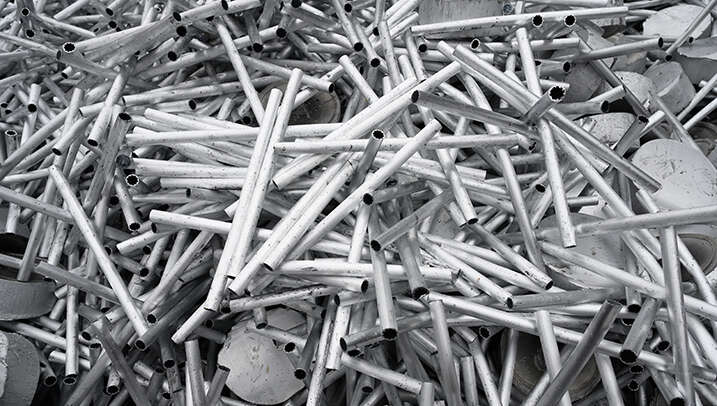The automotive industry demands a lot from the alloys used for today’s lightweight, super-efficient vehicles. Magnesium, specifically, has made a huge positive impact in being used by itself or combined with aluminum to reduce the weight of the cars. One of the most abundant elements in the planet, however, right now the supply of magnesium as a processed metal is what manufacturing around the world is running short of.
This is worrying news for automotive manufacturers, who soon could be facing significant shortfalls of both magnesium and the aluminum grades they need. Consumer electronics manufacturers look to potentially be impacted as well (we’re only just starting to recover from the global semiconductor chip shortage).
A solution is to focus more attention on scrap and scrap supply chains to make up for the magnesium shortage until the upstream supply chain is back up and running; having the right metals analyzers whether recycling in-house at a die casting facility or at a scrapyard will play a role and we can help.
Your scrap supply chain
The scrap supply chain is unique; what affects larger companies will ripple throughout the rest of the supply chain. The magnesium shortage is no different. Every part of the scrap metal supply chain can play a huge role until upstream supply chain is back up and running.
Magnesium scrap comes from two main sources:
Whilst there is a lot of scrap out there, delivering the right raw material to die casters is crucial. One of the challenges in metals recycling is contaminations that start to accumulate when the metal is recycled repeatedly. Unwanted materials can cause severe issues in metals production and therefore screening for low level contaminants is becoming increasingly important. Elements such as copper, tin, sulphur, and phosphorous must be identified before adding the scrap metal to a melt. And die casters will always pay a premium for the most desirable high-grade magnesium scrap.

OES, LIBS and XRF technology
To deliver the right raw material for metal production, the supply chain will need to ensure that they have the right analysis tools in place. To sort and supply magnesium and aluminum alloy scrap, analyzers need to be capable of detecting harmful elements. This is fundamental in your choice of instrument which can either be OES, LIBS or XRF.
OES
Optical Emission Spectroscopy (OES) gives the best performance of field-based analytical methods, delivering comprehensive compositional information of metals. Hitachi’s OE Series of analyzers is a compact benchtop instrument capable of measuring all tramp, trace and alloying elements within aluminum and magnesium.
The OE750 is designed to meet the requirements of the die casting industry, magnesium alloy processors and recycling industry. It analyses the main components such as Al, Cu and Zn precisely and accurately, and offers low detection limits to control trace elements like iron and nickel. Due to its wide wavelength range, the OE750 can determine many important rare earth elements.
If you are a die caster, you can also use the OE750 and OE720 help you speed up the production process and reduce tap-to-tap time by ensuring the right melt chemistry. For larger scale recycling operations, who are providing greater sophistication in control of melt quality and composition, the low detection limits offered by OES can help you adapt to changing market conditions to maximize profits.
LIBS
Laser Induced Breakdown Spectroscopy (LIBS) delivers grade information for rapid sorting with no X-rays. Hitachi’s Vulcan+ handheld LIBS analyzer can detect lithium within aluminum, and other light elements, such as silicon and magnesium in seconds. A LIBS spectrometer also allows you to identify a wide range of alloys including stainless steels, low alloy steels and nickel.
XRF
Handheld X-ray fluorescence (XRF) analyzers like the X-MET8000 from Hitachi have the ability to detect small amounts of magnesium (<1%) in aluminum alloys but need slightly longer test times to accurately analyse amounts of magnesium. It’s great for identification and chemistry of commercial alloys including aluminum, silicon and bronzes. The non-destructive X-MET8000 can handle even the most demanding scrap sorting applications in seconds – including the detection of hazardous elements.
Our bundles
As no one instrument does everything, we also offer full solution packages to help businesses continue to deliver and produce high-quality products for customers cost-effectively.
Even if the magnesium shortage doesn’t happen as predicted, the general raw material shortage around the world is here to stay for awhile at least. That’s why ensuring you and your supply chain are able to sort, reduce waste and stop defects at raw materials is crucial for long-term business success.
If you need help choosing the right metal analyzer for your analysis needs, contact our experts today for a chat.
Get in touchYou might also be interested in:
Application Note: Determination of Magnesium Alloys with OE750
Application Note: Vulcan LIBS Analyzer for the Analysis and Identification of Aluminum Alloys
Blog: The Rise of Lighter-Weight Metals in the Automotive Industry